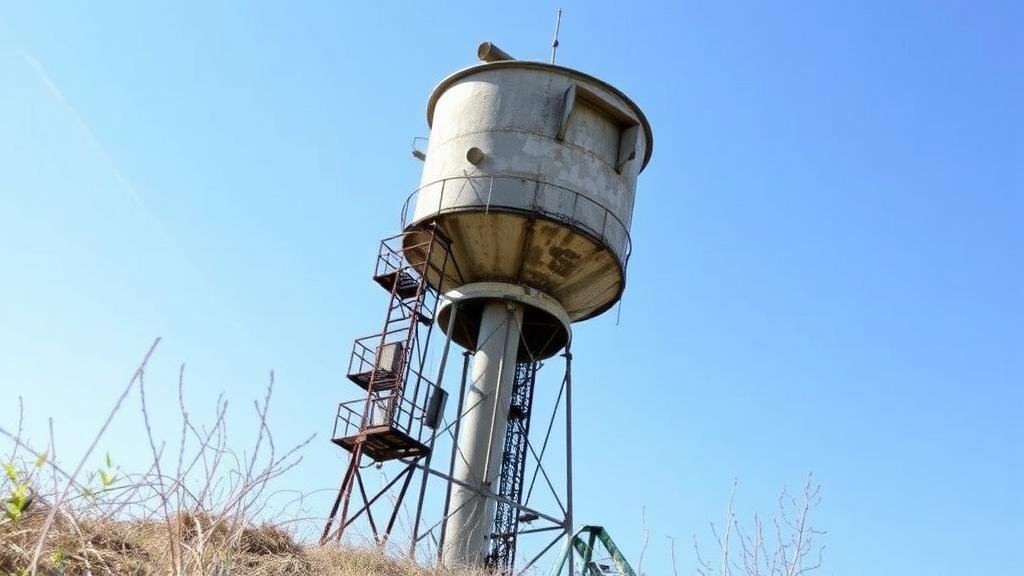Detecting Near Abandoned Water Towers for Tools and Utility Relics
Detecting Near Abandoned Water Towers for Tools and Utility Relics
Water towers, particularly those that have been abandoned or decommissioned, present unique opportunities for researchers and hobbyists interested in the preservation of historical utilities and the exploration of industrial archaeology. This article discusses the methodologies, technologies, and logistic considerations related to detecting and interpreting these structures, specifically focusing on tools and utility relics associated with them.
The Historical Significance of Water Towers
Water towers serve as crucial infrastructural components that have historically provided water storage, pressure regulation, and emergency supplies for various communities. The abandonment of such towers often coincides with economic downturns or advances in technology. r significance extends beyond mere functionality; they are markers of community development, engineering ingenuity, and historical progress.
For example, in some areas of the United States, decommissioned water towers have become artifacts that narrate the industrial evolution from manual labor to mechanized processes. Recognizing the historical and cultural value of these structures is essential for motivating efforts to detect and preserve them.
Methodologies for Locating Abandoned Water Towers
Detecting near-abandoned water towers utilizes a mix of traditional research methods and advanced technology. Researchers can approach this task through several methodologies:
- Historical Research: Archival research can reveal the locations of historical water towers, including maps, city directories, and maintenance records.
- Aerial Surveys: Modern technology such as drones equipped with high-resolution cameras or LiDAR scanners can provide aerial imagery that highlights the location of water tower remnants.
- Geographic Information Systems (GIS): GIS technology helps in mapping out locations and analyzing spatial data to identify patterns and features of interest in a given area.
- Ground Penetrating Radar (GPR): This non-invasive technique can detect underground structures, plumbing, or remnants that were once part of a water tower system.
Tools and Techniques for Inspection
Once potential sites have been identified, inspectors can employ a range of tools and techniques to delve deeper into the analysis of these structures:
- Metal Detectors: These devices are indispensable for locating metallic relics, such as tools or piping, that may still be buried or hidden within the structure.
- Photogrammetry: This process involves capturing images from various angles to create a 3D model of the water tower, allowing detailed analysis without physical intrusion.
- Laser Scanning: A laser scanner can produce precise measurements of the structure’s dimensions, which assists in assessing its integrity and age.
Real-world Case Studies
Several case studies exemplify the practical application of the methodologies outlined above. In 2016, a team in Pennsylvania utilized drone technology and GIS mapping to discover multiple abandoned water towers that were previously unrecorded. Their research led to the preservation of a site that highlighted early 20th-century water management systems, providing insight into urban development patterns.
Similarly, a project in rural Arkansas employed GPR and metal detectors to uncover missing relics connected to a decommissioned water tower. They uncovered significant historical findings, including original iron piping and a variety of manufacturing tools, indicating the sites role in the communitys water supply management during the 1930s.
Challenges and Considerations
While detecting near-abandoned water towers and recovering associated artifacts is exciting, there are various challenges and considerations researchers must be aware of:
- Regulatory Compliance: Before excavation or investigation, it is crucial to understand any local regulations regarding historical sites and archaeological digs.
- Safety Hazards: Abandoned water towers can pose serious risks due to structural instability, hazardous materials, or exposure to wildlife.
- Community Engagement: It is essential to engage local communities and stakeholders to gain support and insights regarding historical relevance, which can influence successful preservation efforts.
Actionable Takeaways
To effectively detect and preserve near-abandoned water towers, it is imperative to combine historical awareness with technological advancements. Here are some actionable takeaways for those interested in this field:
- Conduct thorough historical research to identify potential sites of interest.
- Use modern aerial and ground-based technologies to enhance discovery efforts.
- Engage with local stakeholders to promote awareness and support for preservation initiatives.
- Prioritize safety and compliance with regulations to ensure responsible exploration.
Detecting near-abandoned water towers is not just an archaeological endeavor; it is an opportunity to reconnect with and preserve essential parts of our industrial heritage. Through a combination of historical insight and modern technology, enthusiasts and researchers alike can uncover valuable tools and utility relics that tell the story of water management and community development throughout history.



